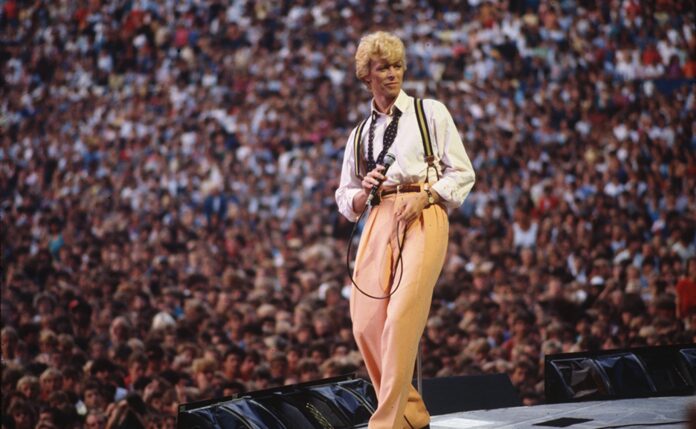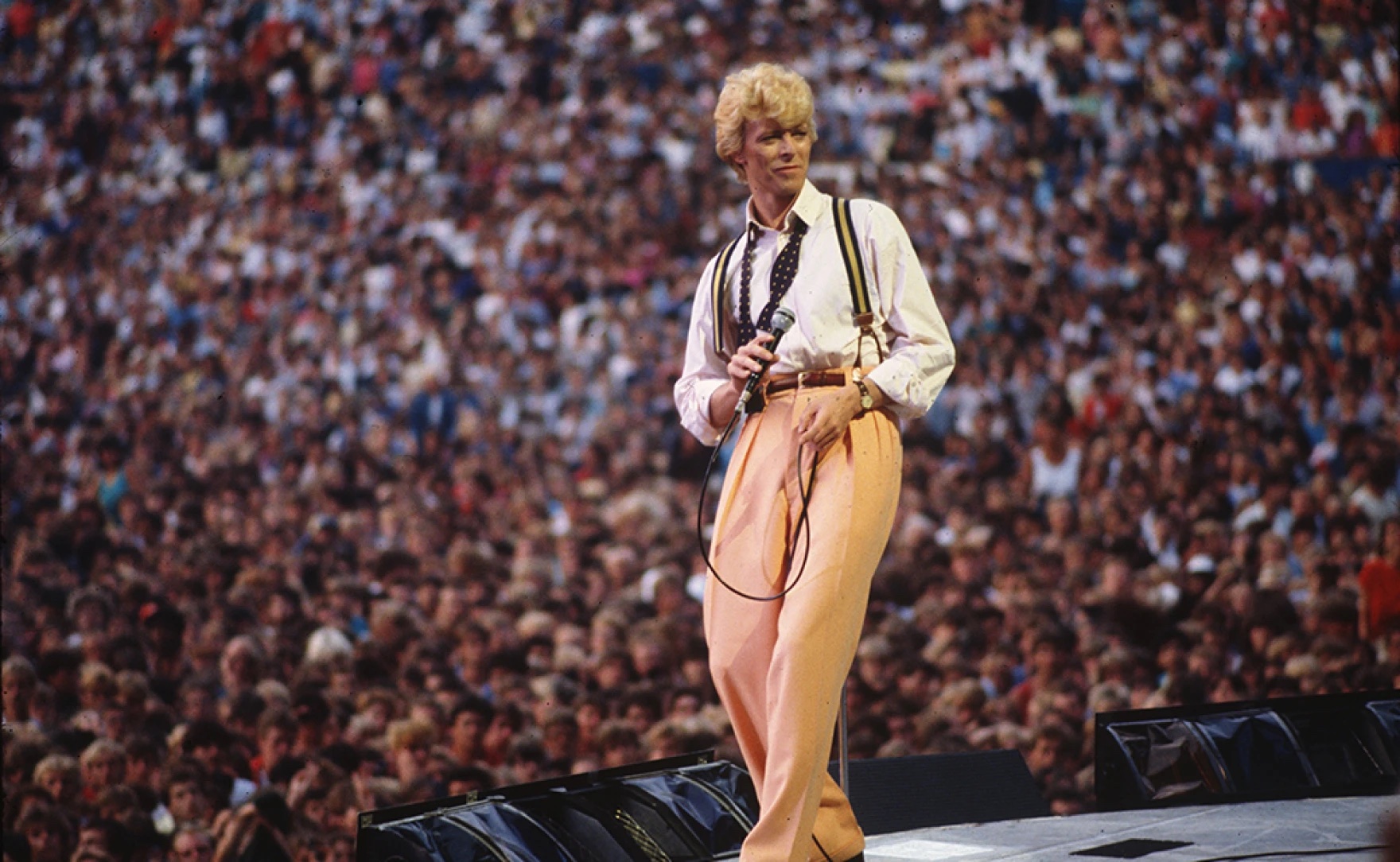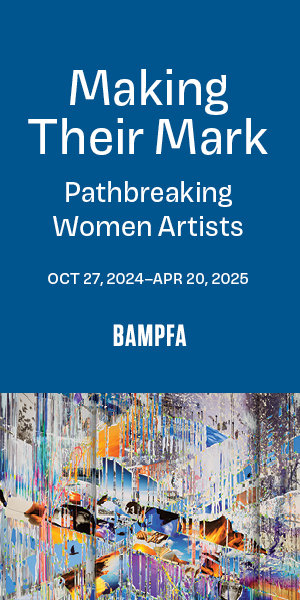Last year, Brett Morgen’s “David Bowie speaks to David Bowie” documentary Moonage Daydream treated viewers to an outsized Disney ride of roaring, Technicolor concert footage. In 2017, the director and his crew were granted access to a remarkable collection of artifacts from the musician’s life including artwork, photos, and footage from concerts and interviews. With the final edit of the film in his hands, Morgen chose to use audio clips from the enigmatic all-time rock star to narrate the feature, so that the public could see and hear everything Bowie.
When they saw “Serious Moonlight”-persona Bowie trying on Prince or MJ-like pop stardom 15 years into his career, like a new pair of parachute pants, a $17 million dollar recording contract from EMI Records was helping to refresh his brand. This glow-up was fed by big-time ’80s commercialism.

Let’s Dance, his 15th album, was released on April 14, 1983 and produced by Nile Rodgers, a founding member of the band CHIC. Bowie’s new record suited his modern new persona. Big drums, sweeping horns, ripping guitar, and a high production sheen transformed Bowie’s art into big business.
“David could have had any producer he wanted, white or Black. He could have gone with Quincy Jones and a more certain hit. But he called me, and for that, I am grateful,” Rodgers told Musician Magazine in 1983. Of course, Rogers was being somewhat modest—he was fresh off the success of Diana, Diana Ross’s best-selling album of her career, which he helped mastermind.
Just as Bowie was looking for a hit after leaving RCA Records and in short order, turning in multiple film appearances, Rodgers was on the lookout for a new job. They met in a club and began discussing music. Bowie used a portrait of Little Richard as a reference for how his new album should be produced.
The album was eventually recorded at New York City’s Power Station in December 1982, following certain traditions of jazz artists looking to make records on the cheap. When the musicians arrived at the studio at 9am to record, they’d place their lunch order, so there were no time gaps in the studio. Rodgers put together a band that included as lead guitarist Texas blues musician Stevie Ray Vaughan, whose solo on the album’s title track breathed new life into the American Top 40, Casey Kasem song formula. Bowie’s role was to sing.
The feat was completed in 17 days.
Let’s Dance was a huge commercial success, charting at number one in several countries and transforming the old rock star into an “I want my MTV” charcuterie persona. Teenagers who didn’t click with Ziggy Stardust were following this new blonde Bowie.
In an interview with Details magazine in 1991, Bowie described the album as, “a rediscovery of white-English-ex-art-school-student-meets-black-American-funk, a refocusing of Young Americans.”
So of course “Let’s Dance” the single is a never-ending bop, aided by delayed pedals, big honking horns from an earlier era of pop music, and Bowie making new cash barking on about the “Serious Moonlight.” But “Modern Love,” with its charming visual shot at the now-defunct Spectrum Auditorium in Philadelphia, home of the 1983 NBA Champion 76ers led by Dr. J and Moses Malone, still rings with unprecedented pop mystique.
It’s a dedication-to-meets-robbery-of Little Richards’ rock and roll swagger that fits an ’80s narrative of musical throwbacks to the ’50s and ’60s. That pattern would be repeated in Billy Joel’s doo-wop projects, and the Dirty Dancing movie soundtrack which came to dominate the pop charts. Despite the fact that Bowie later referred to the album as his “Phil Collins phase,” and began to dismiss it as more of a Nile Rogers record than his own, he never charted so high again in his career. Perhaps all this is fitting for a performer who was known for his refusal to commit to a single musical character.
Rodgers, on the other hand, would come to step fully into his role as an in-demand ’80s producer, working with INXS, Duran Duran, Madonna, and Mick Jagger.
In 1989, the album was ranked number 83 on Rolling Stone’s list of the 100 Best Albums of the Eighties. Let’s Dance is a showing of Bowie’s best-served alter ego: pop star.





